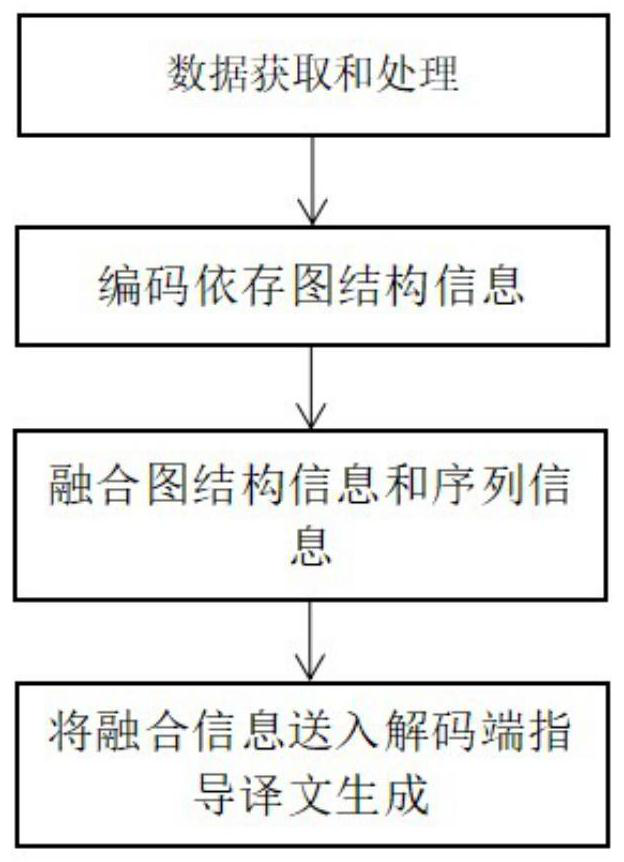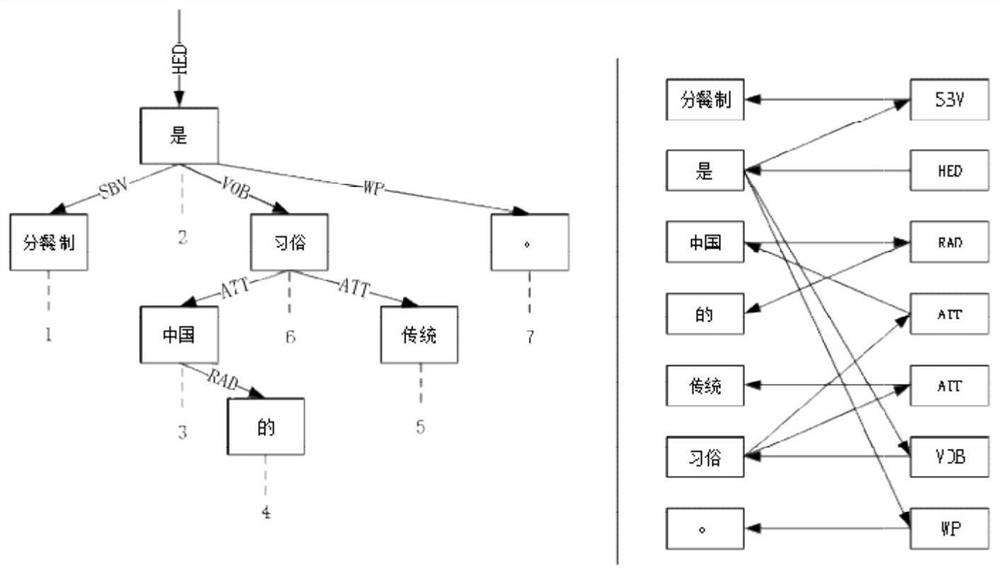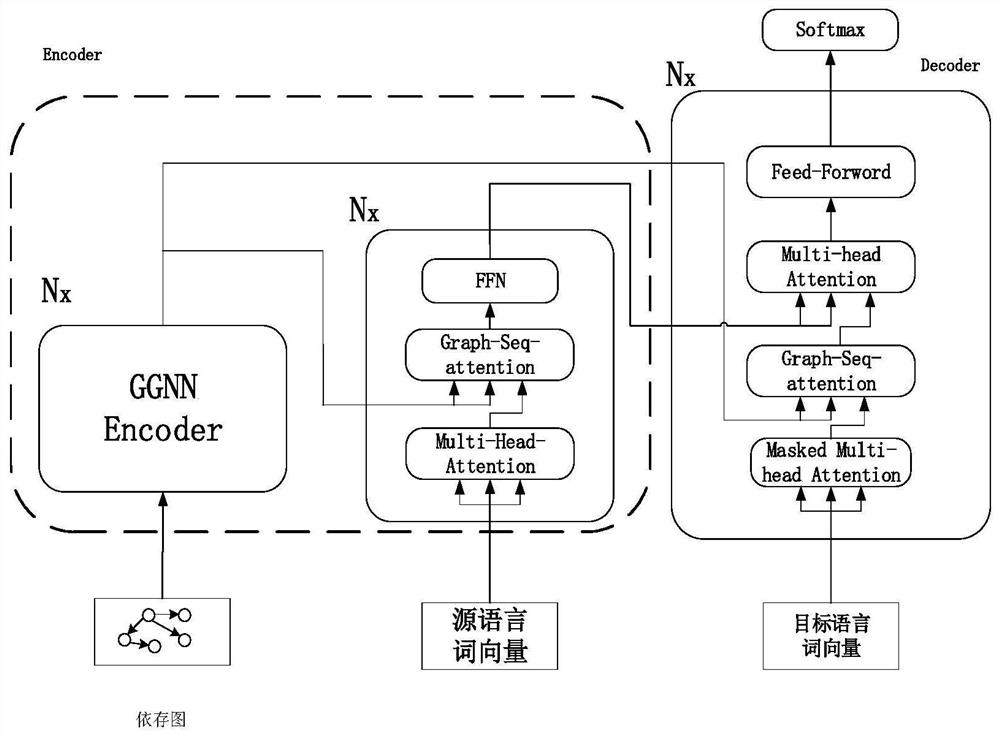Dependency graph network-based Han-Vietnamese neural machine translation method
A machine translation and syntax-dependent technology, applied in neural learning methods, neural architecture, natural language translation, etc., can solve problems such as out-of-order translation, inability to model syntactic structure information, insufficient learning of syntactic differences, etc., and achieve translation effect improvement Effect
- Summary
- Abstract
- Description
- Claims
- Application Information
AI Technical Summary
Problems solved by technology
Method used
Image
Examples
Embodiment 1
[0039] Embodiment 1: as Figure 1-3 As shown, the Chinese-Vietnamese neural machine translation method based on the dependency graph network first crawls the Chinese-Vietnamese parallel corpus from the website, and uses the dependency syntax analysis tool to analyze the dependency syntax of the obtained Chinese-Vietnamese bilingual corpus to obtain the dependency syntax analysis of the source language. secondly, convert the acquired dependency syntax analysis tree of the source language into a dependency graph with a graph encoder, and encode it to obtain the dependency graph structure information; then send the dependency graph structure information to the coding end to fuse with the source language sequence information, and use This fusion information is sent to the decoder to guide model translation.
[0040] Specific steps are as follows:
[0041] Step1. Obtain data and perform data preprocessing: Crawl the Chinese-Vietnamese parallel corpus of the website through crawler...
PUM
 Login to View More
Login to View More Abstract
Description
Claims
Application Information
 Login to View More
Login to View More - R&D
- Intellectual Property
- Life Sciences
- Materials
- Tech Scout
- Unparalleled Data Quality
- Higher Quality Content
- 60% Fewer Hallucinations
Browse by: Latest US Patents, China's latest patents, Technical Efficacy Thesaurus, Application Domain, Technology Topic, Popular Technical Reports.
© 2025 PatSnap. All rights reserved.Legal|Privacy policy|Modern Slavery Act Transparency Statement|Sitemap|About US| Contact US: help@patsnap.com



